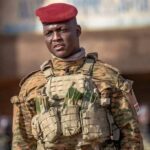The Journey of Mogusii’s Heirs: An Abagusii Tale from the 17th Century
In the early years of the 17th century, the Abagusii were a people on the move, their roots stretching back to a mythical place called Misiri, a land of hardship north of Mount Elgon. Oral traditions whispered that their ancestor, Mogusii, a descendant of the great Bantu leader Kintu, had led them southward through the lands of Sudan and Uganda, seeking fertile grounds to sustain their growing families. By 1638, as recorded in the genealogical studies of the time, the Abagusii had not yet settled in their present-day homeland in the Gusii Highlands. Instead, they were scattered across the Kano Plains, a humid flatland between Kisumu and the western highlands, where they lived in small homesteads, cultivating millet and rice while herding cattle, goats, and sheep.
The Clan of Abagetutu and the Looming Threat
Among the Abagusii, the clan of Abagetutu was known for its fierce warriors and skilled farmers. Led by a wise elder named Obara, the clan had thrived in the Kano Plains for over a century, their homesteads marked by circular huts surrounded by fields of finger millet and sorghum. Obara’s family traced its lineage directly to Mogusii, and he often recounted tales of their migration, emphasizing the importance of unity among the Abagusii clans—Abagetutu, Abagirango, Abanchari, and others that were beginning to take shape.
But the 17th century was a time of upheaval. The Abagusii faced mounting pressure from neighboring communities. To the north, the Nilotic-speaking Luo, led by the formidable warrior Ramogi Ajwang’, were expanding along the shores of Lake Victoria, their cattle-herding lifestyle making them more mobile and aggressive than the agricultural Bantu. To the east, the Kipsigis, another pastoralist group, were encroaching from the Rift Valley, their raids becoming more frequent as they sought to replenish livestock lost to drought and disease.
One evening in 1652, as the sun dipped below the horizon, Obara gathered his clan under the shade of a sacred fig tree. The air was thick with tension. A scout had returned from the lakeshore with dire news: the Luo were planning a raid to drive the Abagusii from the Kano Plains entirely. Obara’s eldest son, Nyakundi, a tall and muscular warrior with a scar across his cheek from a previous skirmish, stood up. “Father, we cannot wait for them to strike. We must unite the clans and fight, or we will lose everything Mogusii built for us.”
Obara nodded, his eyes tracing the faces of his people—men, women, and children who looked to him for guidance. “Nyakundi speaks wisely,” he said. “But fighting alone will not save us. We must call upon the other clans—Abagirango and Abanchari—and face this threat as one. Our strength lies in our unity.”
The Gathering of the Clans
Messengers were sent across the plains, carrying staffs adorned with beads to signal a summons. Within days, the leaders of the Abagirango and Abanchari clans arrived at Obara’s homestead. The Abagirango were led by a fierce woman named Nyakanethi, known for her skill in weaving and her sharp strategic mind. The Abanchari were led by an elder named Mogaka, whose knowledge of the land made him a master hunter. Together, they represented the growing unity of the Abagusii, a people bound by their shared history and language, Ekegusii, which set them apart from their neighbors.
Nyakanethi spoke first, her voice steady. “The Luo are many, and their warriors are swift. But we know this land better than they do. We can use the plains to our advantage—set traps in the tall grasses and strike when they least expect it.” Mogaka agreed, adding, “We must also protect our livestock. If we lose our cattle, we lose our future.”
The clans spent the night planning, their discussions punctuated by the rhythmic beat of drums and songs of courage. The Abagusii believed in the power of Engoro, their supreme god, who they worshipped through ancestral spirits. Obara led a ritual, offering sacrifices of a goat to appease the spirits and seek their protection in the coming battle. The air filled with the scent of roasted meat and the chants of the Omoragori, a diviner who interpreted the will of the ancestors.
The Battle of the Plains
At dawn, the Abagusii warriors, armed with iron spears and shields forged by their skilled blacksmiths, took their positions. The women and children hid in a nearby thicket, ready to flee if the battle turned against them. Nyakundi led a group of young warriors, their bodies painted with white clay to honor their initiation rites, a tradition that marked their passage into adulthood and prepared them for war.
As the Luo approached, their war cries echoing across the plains, the Abagusii sprang their trap. Hidden in the tall grasses, Nyakundi’s warriors unleashed a volley of arrows, catching the Luo off guard. The Abagirango and Abanchari warriors flanked from the sides, their spears gleaming in the morning light. The battle was fierce, with both sides suffering heavy losses. Nyakundi fought bravely, his spear finding its mark again and again, but the Luo’s numbers were overwhelming.
Just when it seemed the Abagusii might be overrun, a sudden storm broke over the plains. Heavy rain turned the ground to mud, slowing the Luo’s advance. Obara, watching from a rise, saw this as a sign from Engoro. “The spirits are with us!” he shouted, rallying his warriors for a final push. The Abagusii fought with renewed vigor, driving the Luo back toward the lakeshore. By midday, the invaders retreated, leaving behind a trail of fallen warriors and stolen cattle.
A New Path Forward
The victory was bittersweet. The Abagusii had defended their home, but the cost was high. Many warriors, including Mogaka’s youngest son, had fallen. Obara knew that the Kano Plains were no longer safe. The Luo would return, and the Kipsigis were still a threat from the east. At a council meeting that evening, he proposed a bold plan. “We must leave the plains and seek a new home in the hills to the south. The highlands will protect us, and the land there is fertile.”
Nyakanethi and the surviving warriors agreed. Over the next months, the Abagusii clans began their migration to the Gusii Highlands, a journey that would eventually lead them to their present-day homeland in Kisii and Nyamira counties. They carried with them the lessons of the Kano Plains—unity, resilience, and the importance of their traditions. The battle became a legend, a story told to future generations about the courage of Mogusii’s heirs and their unbreakable spirit.
Historical Context and Cultural Notes
This story reflects the Abagusii’s historical context in the 17th century, drawing from oral traditions and scholarly insights:
- The Abagusii’s migration from Misiri (possibly north of Mount Elgon) through Uganda to the Kano Plains is supported by sources like Transafrican Journal of History (1986) and Traditional Music & Cultures of Kenya. Their stay in the Kano Plains for over a century aligns with this timeline.
- Their lifestyle as agropastoralists, cultivating millet and rice while herding livestock, is consistent with descriptions from Kisii People – Wikipedia and Gusii | Encyclopedia.com.
- The threat from the Luo and Kipsigis, as well as the Abagusii’s eventual move to the Gusii Highlands by the 18th century, is documented in sources like Traditional Music & Cultures of Kenya and Population movement, settlement and the construction of society to the east of Lake Victoria in precolonial times.
- Cultural elements, such as their belief in Engoro, initiation rites, and the role of blacksmiths, are drawn from Kisii People – Wikipedia, Gusii | Encyclopedia.com, and SOCIO-ECONOMIC AND POLITICAL ORGANISATION OF KENYAN COMMUNITIES IN THE 19TH CENTURY.
The story captures the Abagusii’s resilience and communal spirit, themes that remain central to their identity today. If you’d like a different style or focus for the story, let me know!
- SHA: Emergency Evacuation and International Referrals – Access to Critical Care
- SHA: Dental and Optical Benefits – Caring for Your Smile and Vision
- SHA: Maternity Coverage – Comprehensive Care for Growing Families
- SHA: Outpatient Benefits Decoded – Your Day-to-Day Medical Coverage
- SHA: Inside Your Inpatient Coverage – Hospital Care Benefits Explained
- SHA: Your Benefits Breakdown – What Every Teacher Gets Based on Job Group
- TSC Unveils Comprehensive Medical Cover for All Teachers Starting December 2025
- Tragedy Strikes KJSEA Marking Exercise as Examiner Dies at Machakos Girls High School
- Shadows of Empire: How the West Maintains Control in Africa
- Why Senator Okiya Omtatah Wants to Abolish the Bomas National Tallying Centre (And Why It Matters for 2027)
- What to Study Now for a Successful Career in Kenya’s Future (2026-2050)
- AUDIT SHOCK: Only 3,000 Schools Get Capitation Funds as Govt Cracks Down on “Ghost Students”
- TSC’s Promotion Blueprint: How Teachers Earn Their Next Grade
- TSC CAREER OPPORTUNITIES: Deputy Director & Assistant Director Positions
- TSC 24,000 TEACHER INTERN VACANCIES
- EGYAID Scholarship Program 2025-2026
- Oman Scholarship Program 2025-2026
- 2026 COMMONWEALTH PhD & MASTERS SCHOLARSHIPS
- Papaya Seeds: Nature’s Hidden Powerhouse
- Guide to Teacher Promotion with TSC
- Teacher Transfer Process Tutorial













